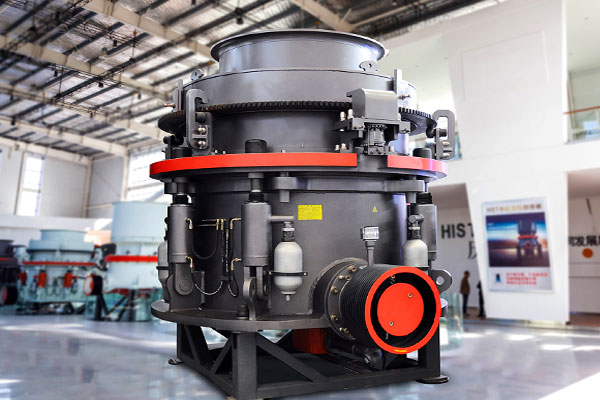Cone crusher
A cone crusher is a versatile and widely used type of crushing equipment, often used in mining, quarrying, and aggregate production. It is designed to crush materials by compressing them between a rotating mantle and a stationary bowl liner.This compression breaks the material into smaller particles, which pass through the machine to create uniform output sizes. Cone crushers are essential for producing high-quality aggregate, crushed stone, and ores such as copper, gold, and iron ore.
Working Principle of Cone Crushers
The cone crusher operates by compressing the material between a moving cone (also called a mantle) and a stationary cone (also known as a bowl liner). The material is fed into the top of the crusher, where it falls between the cone and is crushed as the mantle moves in an eccentric motion, thereby reducing the size of the material. The crushed material is then discharged from the crusher at the bottom. The size of the output material can be adjusted by changing the distance between the mantle and the bowl liner, allowing for different product sizes.

Advantages of Cone Crushers
- Efficient Crushing: Cone crushers are designed to efficiently handle a wide range of materials, including hard ores and rocks. They provide a high reduction ratio, making them suitable for various stages of the crushing process.
- Versatility: They are capable of handling a wide variety of material types, including harder rocks like granite, basalt, and ores.
- Adjustable Output: Cone crushers allow for easy adjustment of the output size, making them highly versatile in meeting specific production requirements.
- Safety Features: Modern cone crushers are equipped with safety features, such as hydraulic relief systems, which allow the machine to automatically release uncrushable material to prevent damage to internal components.
Specifications – Technical Data
| Model | Cavity (coarse/fine) | Close Side feed opening(mm) | Min CSS (mm) | Capacity (t/h) | Power (kW) |
|---|---|---|---|---|---|
| HPT100 | C1 Extra Coarse | 140 | 19 | 75-140 | 90 |
| C2 Coarse | 100 | 13 | 60-110 | ||
| M Medium | 70 | 9 | 52-100 | ||
| F1 Fine | 50 | 9 | 50-95 | ||
| F2 Extra Fine | 20 | 6 | 45-90 | ||
| HPT200 | C2 Coarse | 185 | 19 | 145-250 | 160 |
| M Medium | 125 | 16 | 135-235 | ||
| F1 Fine | 95 | 13 | 115-220 | ||
| F2 Extra Fine | 75 | 10 | 90-190 | ||
| F2 Extra Fine | 80 | 10 | 110-240 | ||
| HPT300 | C1 Extra Coarse | 230 | 25 | 220-440 | 250 |
| C2 Coarse | 210 | 19 | 190-380 | ||
| M Medium | 150 | 16 | 175-320 | ||
| F1 Fine | 105 | 13 | 145-280 | ||
| F2 Extra Fine | 80 | 10 | 110-240 | ||
| HPT400 | C1 Extra Coarse | 295 | 30 | 300-630 | 315 |
| C2 Coarse | 251 | 25 | 285-560 | ||
| M Medium | 196 | 20 | 250-490 | ||
| F1 Fine | 110 | 13 | 180-345 | ||
| F2 Extra Fine | 90 | 10 | 135-320 | ||
| HPT500 | C1 Extra Coarse | 330 | 38 | 425-790 | 400 |
| C2 Coarse | 290 | 30 | 370-700 | ||
| M Medium | 210 | 22 | 330-605 | ||
| F1 Fine | 135 | 16 | 270-535 | ||
| F2 Extra Fine e | 95 | 13 | 220-430 | ||
| HPT800 | C1 Extra Coarse | 350 | 38 | 570-1200 | 630 |
| C2 Coarse | 299 | 32 | 520-1050 | ||
| M Medium | 265 | 25 | 475-950 | ||
| F1 Fine | 220 | 16 | 370-800 | ||
| F2 Extra Fine | 150 | 13 | 310-600 |
